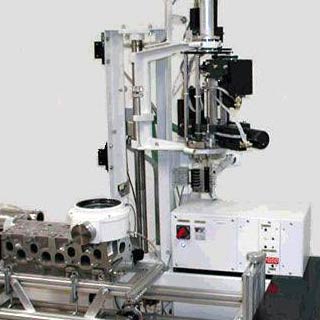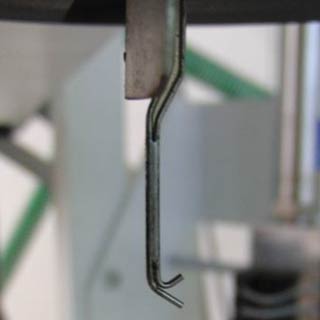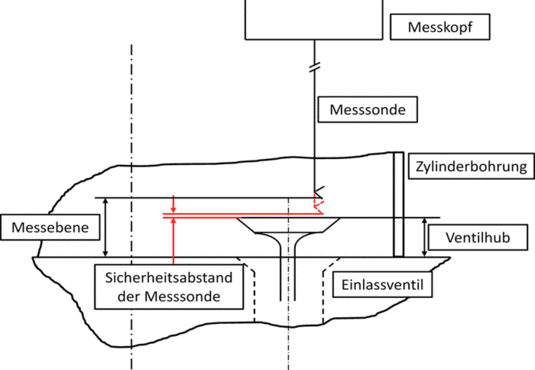Flow analysis
Objective:
Current gasoline engine concepts are increasingly using the direct injection to meet the increased requirements for consumption, emissions and performance. In the internal procedures of the development charge movement plays an important role, as the mixture formation can only take place within the cylinder. In this context, the tumble and swirl numbers and the flow movements for various valve lift settings must be known, allow conclusions on the mixture formation processes and their qualities. For a 1-D simulation of the motor and the load change, the flow numbers are required in the cylinder head
Flow test Jaroš:
The Chair energy conversion systems for mobile applications is that of Dr.-Ing. Karel Jaroš developed "Anemometric tester 24 TV" is used. The test allows the detection of a spatially resolved flow field in the cylinder and provides statements about internal cylinder flow, and the flow coefficient for intake and exhaust ports.
|


|
Principle of measurement:
For illustration of the principle of measurement, a parallelepiped is defined. The intersection of the room diagonals within the cuboid is the pressure probe. The probe has two separate apertures that are arranged to each other (corresponding to the angle of the diagonal space) at an angle of 70.5 degrees. The probe determines the ruling in the directions of the four space diagonals total pressure within the flow. Eight individual measurements are required for each measurement point.
Result:
• Flow rate
• flow coefficient
• measurement protocol flow velocities in x-, y-, z-direction per measurement point
• swirl number and kinetic energy swirl
• Tumble-number and kinetic Tumble-energy
• moment approach to x-, y-, z-axis (comparable to Tipplemann-test)
• graphical representation: contour plot, Surfaceplot, difference maps of
Flow rates, any axial section (angle)
Probe:
• Maximum Axial distance: 82 mm above the cylinder head
• Lower limit: maximum valve lift + 5 mm
• radial increment: 0.25 mm
• Increment axial (distance measuring levels): 0.25 mm
• minimum distance probe to the cylinder wall: 3.5 mm

|



